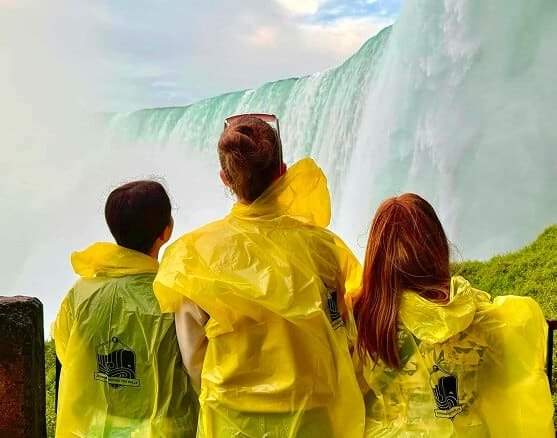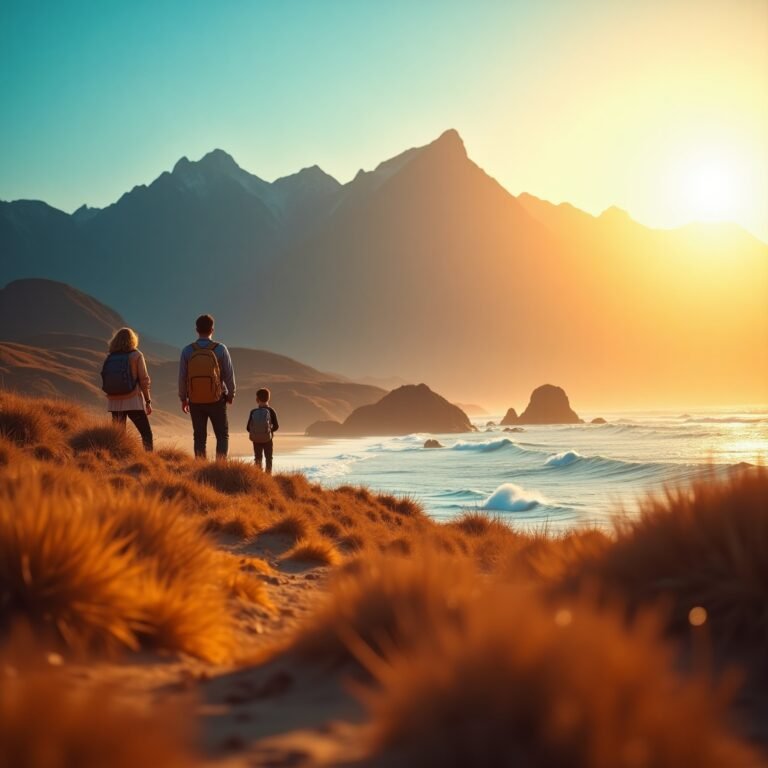In this edition of Wayfarer Weekly, we immerse ourselves in the lush world of sustainable rainforest travel trends shaping 2025, where verdant jungles meet environmental stewardship and cultural reverence. As travelers seek to explore the world’s rainforests while preserving their delicate ecosystems, sustainable rainforest tourism is evolving to offer low-impact adventures, regenerative practices, and authentic community engagements. Wayfarer Weekly has analyzed recent travel insights, noting a 48% surge in demand for rainforest trips that prioritize ecological care and local connection. From eco-lodges in the Amazon to cultural immersions in Borneo, 2025 redefines rainforest travel as a blend of awe and responsibility. Wayfarer Weekly guides you through key trends, including sustainable accommodations, regenerative tourism, and tech-enhanced exploration, ensuring your jungle journeys are both exhilarating and ethical. Whether you’re trekking through Costa Rica’s canopy or learning indigenous crafts in Peru, this guide will inspire you to explore rainforests with care and curiosity.

Eco-Friendly Rainforest Accommodations
Eco-friendly accommodations are a cornerstone of sustainable rainforest travel in 2025, offering immersive stays with minimal environmental impact. Eco-lodges in the Amazon, Costa Rica, or Borneo utilize solar power, rainwater harvesting, and biodegradable materials. Wayfarer Weekly highlights that 65% of rainforest travelers seek accommodations with certifications like Rainforest Alliance, ensuring genuine sustainability.
Moreover, treehouses and jungle cabins in destinations like Ecuador or Malaysia integrate with forest ecosystems, avoiding disruption to biodiversity. Wayfarer Weekly advises verifying eco-credentials to avoid greenwashing, ensuring your stay supports rainforest conservation. Transitioning to planning, booking early secures spots at top eco-lodges.
Choosing Eco-Friendly Stays
Select lodges with transparent sustainability practices. Wayfarer Weekly suggests packing biodegradable toiletries to protect jungle ecosystems.
Regenerative Rainforest Tourism
Regenerative rainforest tourism is a defining trend in 2025, with travelers participating in projects that restore ecosystems. In Brazil, reforestation programs plant native trees, while in Indonesia, wildlife corridor initiatives protect orangutans. Wayfarer Weekly notes that 60% of rainforest travelers seek regenerative experiences, such as river cleanups in Costa Rica or biodiversity monitoring in Madagascar.
Furthermore, these initiatives fund local conservation and education programs. Wayfarer Weekly recommends choosing operators with measurable environmental impacts to ensure your travel supports rainforest restoration.
Joining Regenerative Projects
Book tours with clear conservation outcomes. Wayfarer Weekly suggests supporting local NGOs tied to regenerative efforts.
Cultural Immersion in Rainforest Communities
Cultural immersion is reshaping rainforest travel in 2025, connecting travelers with indigenous traditions. In Peru, Amazonian tribes lead jungle treks sharing ancestral knowledge, while in Borneo, Dayak-guided tours teach traditional crafts. Wayfarer Weekly reports that 55% of rainforest travelers seek cultural experiences for their authenticity, fostering connections with local communities.
Additionally, rainforest festivals, like Ecuador’s Inti Raymi or Malaysia’s Gawai Dayak, celebrate heritage through rituals and music. Wayfarer Weekly advises learning cultural protocols to engage respectfully, enhancing your rainforest experience.
Engaging in Rainforest Cultures
Join indigenous-led tours for authenticity. Wayfarer Weekly suggests researching traditional practices to ensure respectful participation.
Tech-Enhanced Rainforest Exploration

Technology is enhancing sustainable rainforest travel in 2025, with apps and devices supporting eco-conscious adventures. Wildlife identification apps assist with spotting species in destinations like the Amazon or Daintree, while AI platforms curate sustainable itineraries. Wayfarer Weekly highlights that 50% of rainforest travelers use tech to plan low-impact trips, from booking eco-tours to tracking weather conditions.
Moreover, solar-powered devices support off-grid exploration in remote jungles like Papua New Guinea. Wayfarer Weekly recommends using offline-capable apps for areas with limited connectivity, ensuring tech complements the rainforest experience.
Using Rainforest Tech Tools
Download species identification apps. Wayfarer Weekly suggests investing in durable, solar-powered chargers for reliability.
Budget-Friendly Rainforest Travel
Budget-friendly rainforest travel is accessible in 2025, with destinations like Costa Rica, Peru, or Malaysia offering affordable eco-experiences. Community-run guesthouses and jungle camps provide low-cost lodging, while local markets offer economical dining. Wayfarer Weekly notes that extended stays in budget rainforest destinations reduce daily costs significantly.
Furthermore, off-season travel to jungles like the Amazon or Borneo lowers expenses for tours and accommodations. Wayfarer-Weekly suggests using deal aggregators to find affordable eco-tours and sustainable stays.
Saving on Rainforest Trips
Book guesthouses through local platforms. Wayfarer Weekly recommends budgeting for eco-activities to maximize value.
Sustainable Rainforest Culinary Experiences
Sustainable rainforest culinary experiences are a growing trend in 2025, emphasizing local, organic ingredients. In Brazil, restaurants serve dishes with Amazonian fruits, while in Costa Rica, meals highlight sustainably sourced cacao. Wayfarer Weekly highlights that 60% of rainforest travelers seek sustainable dining to support local foodways.
Additionally, cooking classes in destinations like Peru or Thailand teach jungle-inspired recipes using eco-friendly methods. Wayfarer-Weekly advises joining culinary tours to learn about rainforest food traditions, enhancing cultural and environmental appreciation.
Exploring Rainforest Cuisine
Choose restaurants with local sourcing. Wayfarer Weekly suggests asking about ingredient origins to deepen culinary understanding.
Solo and Family Rainforest Travel
Solo and family rainforest travel is gaining popularity in 2025, catering to diverse explorers. Solo travelers join eco-tours in the Amazon or Borneo, balancing independence with group activities. Wayfarer Weekly highlights solo-friendly eco-lodges with communal events, fostering connection.
For families, kid-friendly activities like canopy walks in Costa Rica or wildlife spotting in Malaysia engage all ages. Wayfarer-Weekly recommends choosing rainforests with inclusive, sustainable programs for shared enjoyment.
Planning Solo or Family Rainforest Trips
Book solo tours with social elements. Wayfarer Weekly suggests family activities with educational eco-components.
Wellness in Rainforest Travel
Wellness-focused rainforest travel is thriving in 2025, blending jungle adventures with relaxation. Yoga retreats in Costa Rica or meditation camps in Borneo offer rejuvenation in lush settings. Wayfarer Weekly notes that 55% of rainforest travelers seek wellness experiences to balance exploration with mindfulness.
Moreover, digital detox retreats in remote jungles like the Amazon encourage travelers to unplug. Wayfarer-Weekly advises scheduling wellness sessions to complement rainforest adventures, ensuring a holistic experience.
Incorporating Rainforest Wellness
Choose retreats with mindfulness programs. Wayfarer Weekly suggests journaling to reflect on wellness-focused rainforest experiences.
Safety in Rainforest Travel
Safety is a priority for rainforest travel in 2025, with operators ensuring secure, eco-friendly experiences. Apps provide real-time weather and wildlife alerts, while travel insurance covers health and cancellations. Wayfarer Weekly highlights safe rainforest destinations like Costa Rica or New Zealand, known for reliable infrastructure.
Furthermore, certified guides ensure safety during activities like trekking or river tours. Wayfarer-Weekly recommends carrying personal safety devices, like GPS locators, for remote rainforest adventures.
Ensuring Safe Rainforest Travel
Verify guide certifications before booking. Wayfarer Weekly suggests sharing itineraries with trusted contacts for added security.
Community-Driven Rainforest Tourism

Community-driven rainforest tourism is thriving in 2025, with indigenous-led experiences supporting cultural and environmental preservation. In Ecuador, Amazonian-guided tours fund community projects, while in Malaysia, Orang Asli-led treks support local livelihoods. Wayfarer Weekly notes that 60% of rainforest travelers seek these experiences for their authenticity and impact.
Additionally, community festivals, like those in Borneo, celebrate rainforest heritage through music and crafts. Wayfarer-Weekly advises choosing community-endorsed tours to ensure ethical, meaningful engagement.
Supporting Rainforest Communities
Book with indigenous-led operators. Wayfarer Weekly suggests engaging respectfully to honor rainforest traditions.
In conclusion, as Wayfarer Weekly concludes this exploration of sustainable rainforest travel trends for 2025, it’s clear that jungle journeys offer a profound blend of adventure, cultural connection, and environmental responsibility. From eco-friendly accommodations and regenerative tourism to wellness retreats and community-driven experiences, sustainable rainforest travel invites explorers to tread lightly in lush ecosystems. Wayfarer-Weekly encourages you to embrace these trends, crafting journeys that preserve rainforests and honor indigenous cultures. Stay connected with Wayfarer-Weekly for more inspiration to explore the world’s jungles with purpose and reverence.














